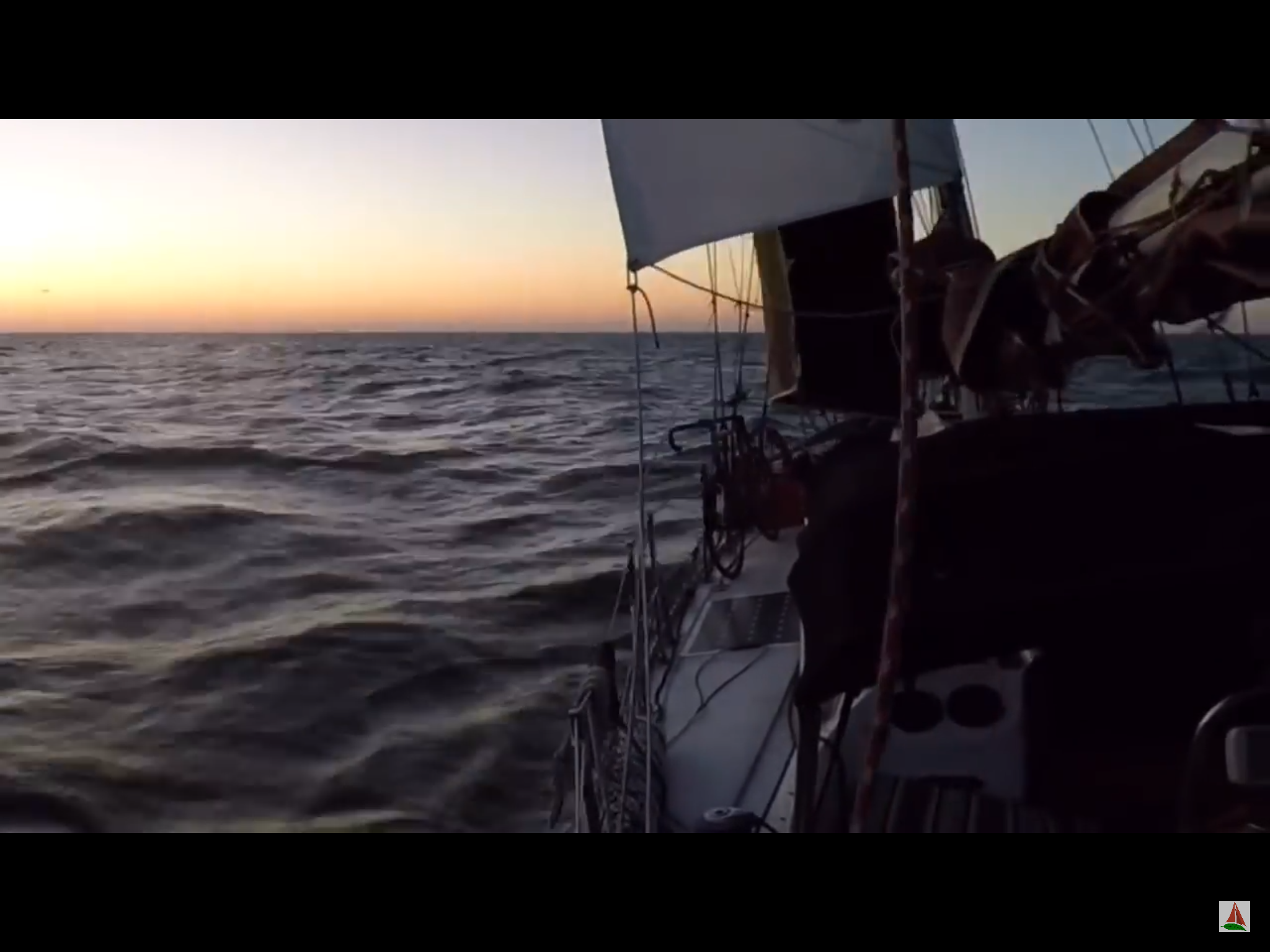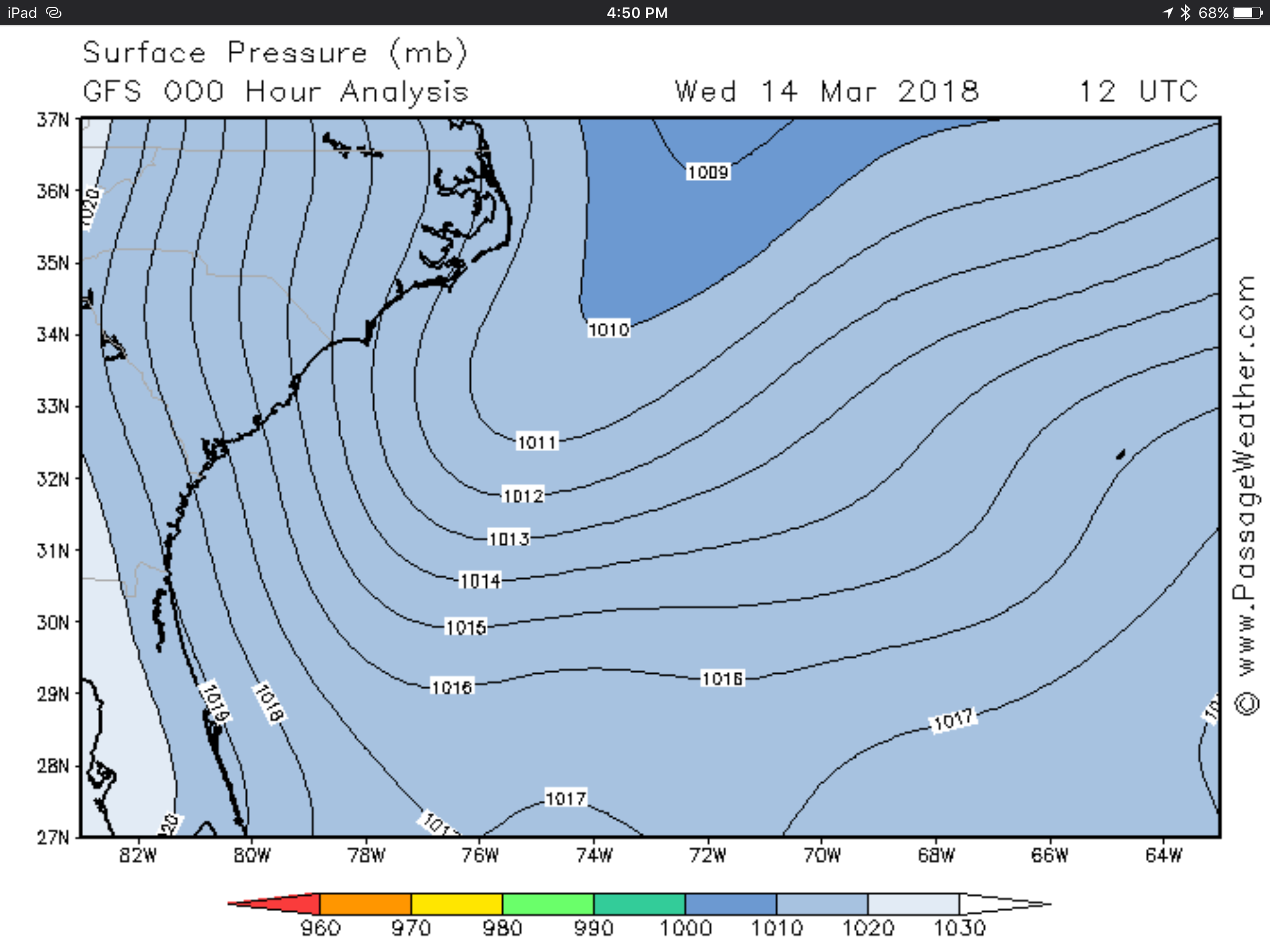As the sun sets, you need to consider what sails you want to be flying as once it gets dark, sail changes become more complicated!
We like to fly our trysail and staysail overnight because if the weather pipes up, we are already reefed down as far as possible! We also like this sail plan because it is bothed balanced and low stress. Should the winds shift on us and cause us to jibe or luff, the sails are small and will not cause significant strain on the rigging.
The staysail is easy to manage and can even be setup on a self tacker, allowing it to reside on the side of the bow that it wishes. The trysail does not involve the boom, so a nightime accidental jibe will not result in damage or strain on the traveler.
These sails work great on beam and broad reaches, even a run (with a barber hauler for the staysail) but are not the best sailplan for beating. A trysail is very small and low, with the center of effort focused near the mast. The staysail is a small jib and has its center of effort forward of the mast. The sails can be balanced for a windward course, but it will be a slow venture!
If you are planning an overnight sail, consider planning it for a time when the wind will be at your backs and you can sail downwind with your tiny sails through the night without losing any speed. Otherwise, you will find your night time distance traveled to be miserably pathetic, which will prolong your time at sea as you make your passage.









